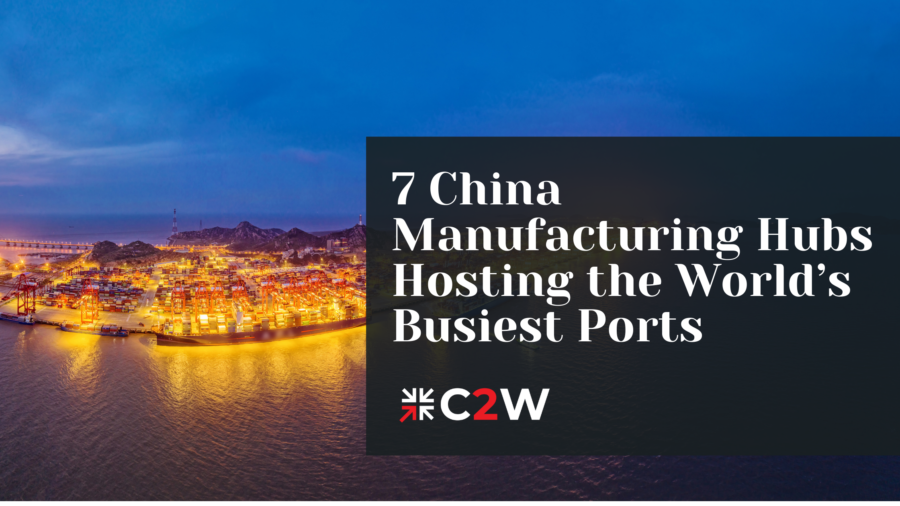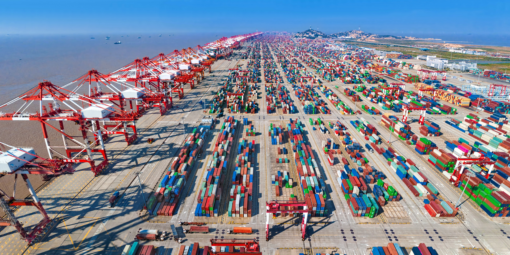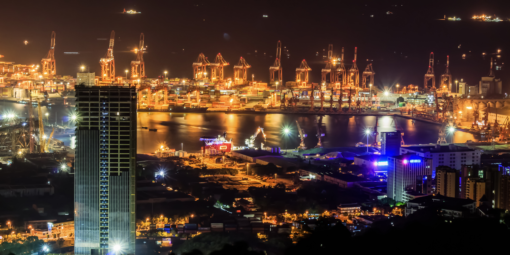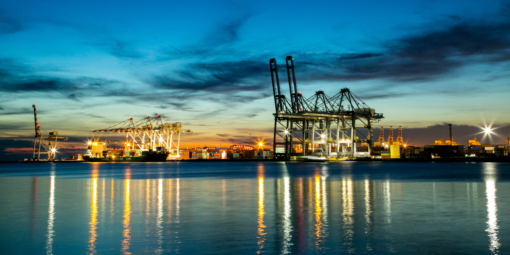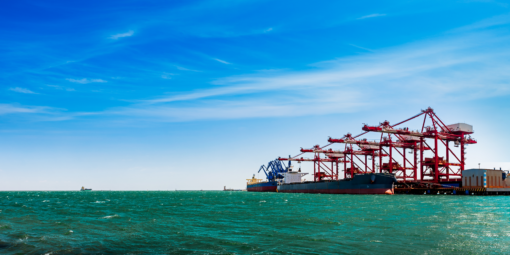Last updated: May 9, 2022
It is no secret that China is still the world’s leading nation in terms of volume of manufacturing and trade, thus making sense that 7 of the 10 busiest ports in the world are located in China. But what does this mean for businesses?
Choosing one city over the other as your manufacturing destination will be based on a wide variety of factors from the supplier capability to the infrastructure availability. Nowadays businesses are all looking globally for effective logistics solutions. That is why the ports are very important as that can enhance efficiency, strengthen competitiveness, and achieve synergy effects and economies of scale, meaning that a city can potentially improve its performance and attract more businesses if it has adequate infrastructure that can facilitate the business processes.
Here we review the 7 China manufacturing cities as homes of some of the world’s busiest ports:
Shanghai
Shanghai is not only China’s financial hub, but also plays a key role in China’s heavy industry. Baosteel Group and Fosun Group, both the largest steel makers in the country, are based in Shanghai. Automobile manufacturing is another important industry located in Shanghai, as Volkswagen and General Motors have their China plants located here. The city is also a leading producer of ethylene, plastics, microcomputers, ICs and mobile phones.
In terms of port usage, the port of Shanghai at the end of 2021 accounted a total of 47.03 Million TEUs, continuing holding the first place over Singapore’s port. Shanghai’s port is allocated in a strategic position next to the China Sea and also a gateway of the Yangtze River Delta.
Ningbo
This city has experienced a rapid growth thanks to its location nearby and south Shanghai, recognized as one of the national logistic hubs in China. The city hosts a variety of industries such as petrochemicals, paper making, steel, electronics, IT, semiconductors, photo-electronics and other harbor-related industries.
The port of Ningbo-Zhoushan is a very rare case of a port merger. And due to its intermodal capabilities it’s able to offer railway services to deliver products to a hinterland which makes it a very popular port in the North of China. Ningbo’s specialized dock for the storage of liquefied chemical products is the largest of its kind in China. In 2021 this port accounted a total of 31.08 million TEUs.
Shenzhen
Shenzhen is not only the world’s manufacturing hub for electronics but is home for third world’s busiest port. Shenzhen’s logistics sector is one of the most developed in China. The industry sector acts as a significant support for Shenzhen’s economy, accounting for 37.8% of the GDP in 2020.[1]
Telecommunications, high-tech manufacturing, finance and IT are its major industries. Local and Global brands manufacture in Shenzhen, brands such as ZTE, Huawei, Apple or LG are examples of the giants that have chosen this city as their manufacturing destination. And also Walmart has its global procurement centre located in this city. In 2021 Shenzhen’s port accounted 28.76 million TEUs.
Guangzhou
In spite of being landlocked and not having sea access, the capital city of the Guangdong province has one of the world’s busiest ports, located at the estuary of the Pearl Delta River, in 2020 it accounted a total traffic of 23.19 million TEUs.
Guangzhou is easily accessible by a great number of highways and railways that are integrated with the national network, making the traffic from and to the port easier. Guangzhou’s main industries are automobiles, electronics, and petrochemicals. Global brands such as Toyota, Honda and Nissan manufacture several models in here. A comprehensive automobile supply chain has been taking shape in Guangzhou.
Qingdao
Qingdao is one of the China’s Economic engines, its pillar industries include electronics, petrochemicals, fine chemicals, automobiles, machinery, metallurgy, building materials, biopharmaceuticals, textiles and garments, and food and beverage processing. Thanks to its location it’s considered one of the most important harbour cities in China, and its home of one of the World’s busiest ports, which in 2021 it accounted an amount of 23.7 Million TEUs.
Tianjin
The Tianjin port is the biggest in the North of China, located at the Hebei River Estuary, serving 11 provinces and Mongolia. In 2021 it accounted a total traffic of 20.26 million TEUs, Tianjin aims to become China’s 3rd economic growth driver after Shanghai and Shenzhen.
And by being the cradle of China’s modern mechanic industry and textile industry, Tianjin is an important industrial center in China.
No matter which of the China Manufacturing Cities you decide to use to source or manufacture your products, in China 2 West we have a broad network of operatives working across the main manufacturing regions of the country to always ensure the best results for your China Manufacturing ventures.
Hong Kong
The China’s Special Administration Region held the first position in terms of TEUs movement from 1999 to 2004, and now is the world’s 10th busiest port with a total volume of 17.79 million TEUs.
According to HKCSD(Hong Kong Consensus and Statistics Department) the four pillar economic sectors of Hong Kong are: trading and logistics (19.8% of GDP in terms of value added in 2019), tourism (3.6%), financial services (21.2%), and professional services and other producer services (11.9%). On the other hand, other important industries contributing to the pre-pandemic growth momentum of the Hong Kong economy are cultural and creative, medical services, education services, innovation and technology, testing and certification services and environmental industries, which together accounted for 9.5% of GDP in terms of value-added in 2019.[2]
Source:
https://www.worldshipping.org/top-50-ports
[1] https://www.statista.com/statistics/1025281/china-distribution-of-gross-domestic-product-gdp-across-economic-sectors-in-shenzhen/#:~:text=Distribution%20of%20GDP%20across%20economic,Shenzhen%20city%2C%20China%202010%2D2020&text=In%202020%2C%20the%20service%20sector,and%2037.8%20percent%20from%20industry.
[2] https://www.censtatd.gov.hk/en/web_table.html?id=220
Related:
Free Trade Zones in China- essentials you need to know about it
You can’t really understand China manufacturing without understanding China in a regional level

